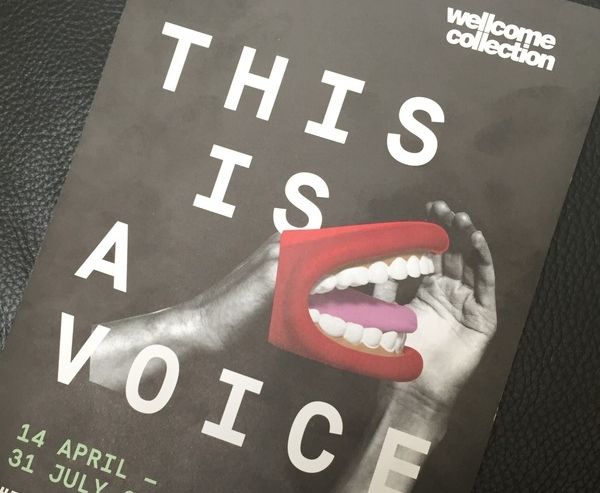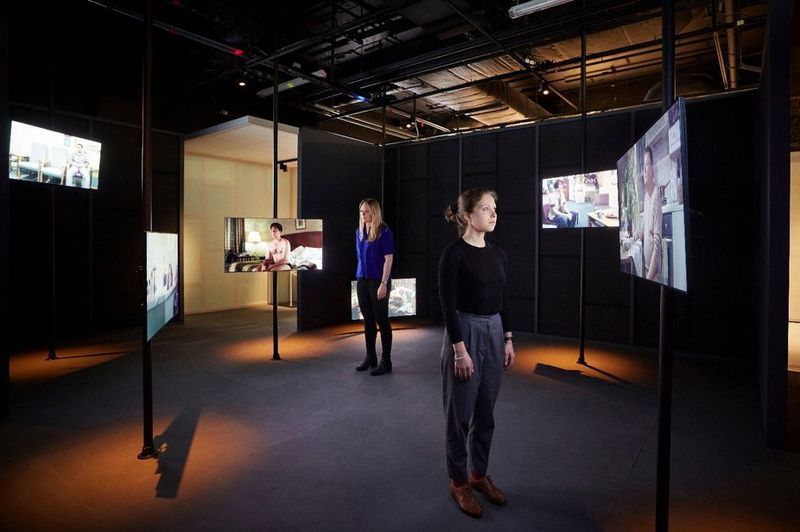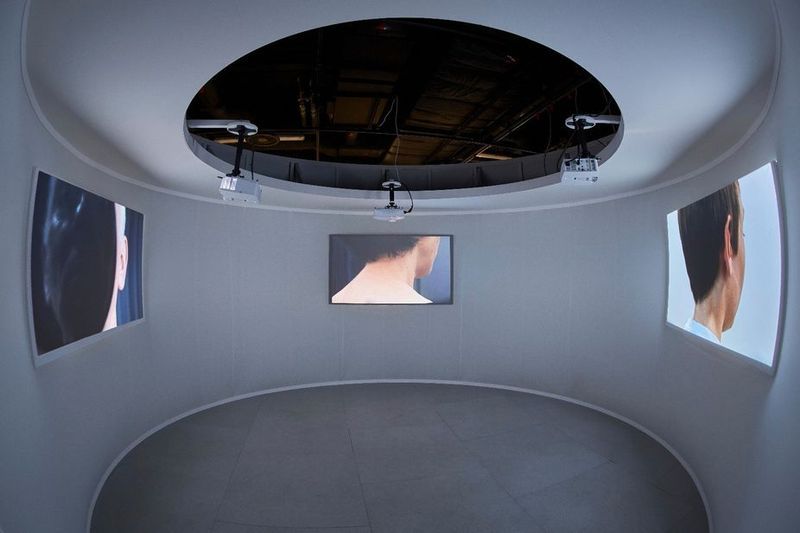
On 26/07/2016 I visited the This Is A Voice exhibition at Wellcome Collection in London, this takes the theme of the voice and explores it through the voice as instrument, melodic contours, strains of the voice, egophony and located and un-located voices. The exhibition itself was sectioned into these themes and allowed you to move through from the human voice at the beginning to the synthetic voice by the end. This sectioning was done using screens rather than separate rooms, allowing the exhibition to still feel one whole space but to not feel overwhelmed by different pieces fighting for attention. The main aspect of the exhibition that worked well was the use of sounds to sculpt the space, you were able to hear sounds from previous pieces as you moved through it. This created a sonic landscape that worked outside of the pieces on show, the sectioning by way of screens complemented this as sounds began to merge together and played off each other. The birdsong of Marcus Coates Dawn Chorus (2007) merged beautifully with Meredith Monk’s Dolmen Music (1981), which again played off Imogen Stidworthy’s Castrato (2012-16). At times I felt that this over-arching soundscape was more interesting than the individual pieces, especially towards the end of the exhibition where it relied too heavily on items in glass cases rather than something you could interact with. The use of sound inspired staging elements made the exhibition feel whole, in the beginning sound proofing material is used to pad the walls and ceiling and throughout listeners are used as a contrast to headphones to listen to individual sound/ video pieces. Again these listeners allowed you to still tune into the soundscape of the space, whilst also focusing in on individual work.
The pieces I responded to in regards to my current project were Anna Barham’s Liquid Consonant (2012), a video loop featuring a 3D render of a face that rotates to reveal a mouth interior that is cold and mechanical rather than warm and fleshy. This was further enhanced by the face speaking, not in words, but in blocks of sound synthetic and mechanical in nature. This made you question the role of the synthetic in the voice and highlighted the contrast in the sounds you would expect the human to make and those produced by this computer generated version.

The work of Marcus Coates’ Dawn Chorus (2007) and Imogen Stidworthy’s Castrato (2012-16) were particularly inspiring more in their staging than the theme of the work, both works are video based but use of multi video and the positioning of them immersed you into the vocal experiments on show. In Coates’ work this was in the form of six screens placed in a circle at varying heights in a black space, allowing you to be in the centre and hear the birdsong being played at you from different sources. With Stidworthy’s work this was placed in a round space covered with a fine mesh screen, the three videos were then projected onto this again placing you at the centre and encasing you in the vocal sounds produced to create the castrato vocal range.


Another piece I found interesting for the imagery produced was Thomas Godart’s three pieces Respiratory Passages from a Case of Croup (1862), Head and Neck of a Man, Showing a Fistulous Opening which Exposes the Epiglottis, Resulting from a Throat Cut (1883) and Papilloma Spring from the Neighbourhood of the Left Vocal Cord (1883). These are medical watercolour illustrations showing vocal pathologies, in particular the piece Respiratory Passages shows the biology of the voice as a horrific and graphic image whilst also being supremely beautiful. Godart’s work in general has a contrast being beautifully illustrated images and the horror of what he is depicting, these evoke a parasite quality that shows the strain of pathology on the human body. To expand this wider the images show the intensity of the voice and the intensity of actions that restrict or cut off the voice.
Finally, the piece Conversations with Eliza (2011) by Steven Cottingham was fascinating in its simplicity. It features a conversation by the artist with a computer program that emulates a Rogerian psychotherapist that restructures answers into questions. The work is a simple video of white text on a black screen of the conversation playing out, then headphones are used to allow you to hear the back and forth between the artist and machine. The conversation centres around fears of becoming an inadequate artist and is humorous in the machines way of continually asking questions that delve further and further into the artist psyche. This simple back and forth is an interesting way to explore the voice of both the inner monologue of the human and the possibility for machine sentience, establishing an interaction between both that makes you question your own conversations with synthetic voices.
